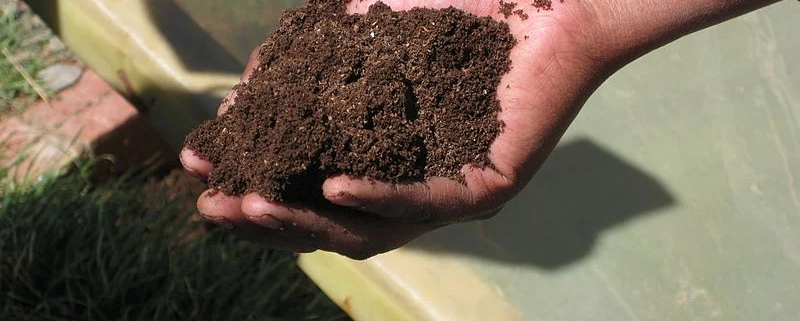Composting at Home
You can make compost at home from your kitchen waste such as vegetable peels, eggshells, coffee grounds, leftover tea leaves, dried leaves from your garden or a nearby park, and animal manure if you have an animal at home to aid in producing good bacteria needed for the growth of your plants. Weeds pulled out from your garden could also go into your compost while pruned disease or pest infested parts of the plants cannot be added. If added, the compost pile becomes a breeding ground for the pests and could in turn infect healthy plants when this compost is used to nourish soil in the future. Instead, infected parts of the plant like leaves can be sprayed with neem oil & soap mixture, dried under the sun until it becomes dry brown matter and then added to the compost pile.
Other substances which cannot be added to the compost include: citrus peels, onions, garlic and ginger in large quantities since these have strong essences which are not suited for home-composting. Cooked food, dairy products, meat and bones cannot be added as well. Citrus peels, however can be used to make home-made bio-enzymes for your plants. When making compost at home, care should also be taken to ensure the area around the composter is well cleaned and maintained.
Compost typically contains (brown) dry matter and (green) wet matter. The dry content is the primary source for carbon whereas the green matter is the source for nitrogen and creates the odour. Dry matter includes materials such as coconut husk and soil, and other dry matter such as dry leaves and straw as available. The green matter consists of kitchen waste. In order to eliminate / reduce the odour keep layering wet and dry matter in your composting container as explained in the following steps:
Steps involved in composting:
- Take a large box or container to compost. This container must have holes in it, at regular intervals, to remove excess moisture, help with air circulation and aid in aerobic processes;
- Start by adding the brown matter to the base of the container;
- Layer this with green matter;
- In this manner, keep adding waste to be composted, in alternating layers of brown and green matter. According to your family size, you will need multiple containers so that when one is composting the others can still take your kitchen waste.
- Ensure that the top layer of the compost pile is covered with brown matter. This prevents flies from being attracted to the pit. It is also advisable to use a container with a lid or close the container to avoid trouble from flies;
- Stir the contents in the pile when you add new waste;
- Butter milk or curd may be sprinkled on the compost pile to speed up the composting process;
- Make sure that the pile is moist but not too soggy; the pile should neither be too moist nor too dry.
Compost should be ready in a couple of months. The contents turn into a deep brown to black powdery substance which has partially decomposed. You may start using this when it has turned powdery. You will also find some chunks in the compost which may be removed by putting the compost through a sieve. These chunks may then be added back to your compost pile while the finished powdered compost is ready to be used in your garden!
With respect to adding compost to your plants, it recommended to add a fist full of compost once in 3-4 weeks for vegetables, greens and herbs. Flowers, on the other hand, do not require compost. Based on the part of the plant being harvested, the proficiency of applying fertilizers or compost will vary; for instance, when harvesting the leaves of the plant, slightly higher rates of fertilizing or adding compost will increase foliage growth.
REFERENCES
Personal Conversation with Kalpana Manivannan

